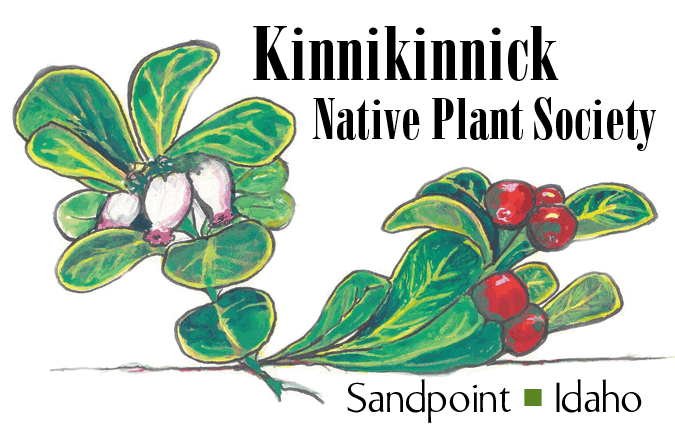Blue and Yellow Violets
(Viola adunca) (Viola orbiculata)
Early Blue Violet
Springtime wouldn't be the same without violets. This huge genus, Viola (the Latin name for various sweet scented flowers) contains some 500 species. Its members hybridize easily creating even more varieties. Common non-native Violas include pansies and Johnny jump ups. These hardy, long-blooming perennials are a cheery addition to any shade garden, in pots and baskets, as borders and much more.
Early Blue (Viola adunca) and Round-leaf (Viola orbiculata) are two native species that make nice landscape additions. Deer resistant, pest and disease-free, violets grow in a variety of habitats from lowlands to subalpine, including grasslands, moist woodlands, riverbanks, and rocky hillsides. They need some moisture and partial to full shade. Both violets serve as a larval host plant for various Fritillary butterfly species.
Roundleaf Violet
Overwintering leaves of Round-leaf violet are often green after the snow melts. The 3-11 basal leaves on long stalks are thin, round, with scalloped edges and rounded lobes at the base of the blade. Five-petaled, bright yellow flowers appear in early spring with brownish-purple veins in the lower three petals. The veins serve as guides for bees seeking the blossom's sweet nectar.
Early Blue violet plants are similar in size and aspect to the Round-leaf violet, except the flower is blue to deep violet with a white base and purple veining on the lower three petals. The upper two petals have hooked spurs at their tips; the species name, adunca, means “hooked.” Blackfoot Indians used Early Blues to die their arrows blue.
All native violet flowers and leaves can be eaten raw in salads or as a garnish (fresh or candied). Violets are high in vitamins A and C, with leaves containing twice the vitamin A found in spinach. Non-native Violas should not be consumed in large quantities, and all Viola rhizomes, fruit, and seeds should never be eaten. Poisonous to humans, they can cause upset stomach, intestinal problems, and respiratory and circulatory depression.
Both Round-leaf and Early Blue violets can be found in the Moist Forest habitat in the North Idaho Native Plant Arboretum. Open to the public, Arboretum parking is at 611 S. Ella Ave. Sandpoint, Idaho.
Learn more about Violets on pages 196-198 of the KNPS publication Landscaping with Native Plants in the Idaho Panhandle, available at local bookstores and the Bonner County History Museum.
Native Plant Notes are created by the Kinnikinnick Native Plant Society. To learn more about KNPS and the North Idaho Native Plant Arboretum, explore www.nativeplantsociety.org.


